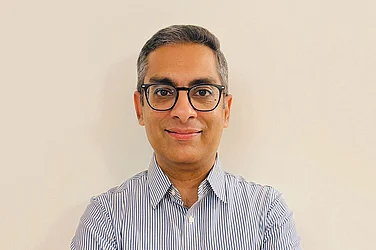For millions of Indians, owning a home is more than just a financial milestone—it’s a symbol of stability and upward mobility. However, rising real estate prices and stagnant wage growth have made this dream elusive, particularly for lower-income earners. While government initiatives like the Pradhan Mantri Awas Yojana (PMAY) have expanded access to affordable housing, the biggest hurdle remains accumulating the initial down payment.
Here’s where Systematic Investment Plans (SIPs) in mutual funds emerge as a game-changing strategy. By leveraging disciplined investing and compounding returns, even small monthly contributions can grow into a substantial corpus, bridging the affordability gap.
The Power of SIPs: Small Investments, Big Outcomes
Historically, Indian equity mutual funds have delivered 12–15% annualized returns over the long term (CRISIL, AMFI data). While market fluctuations are inevitable, a well-diversified equity or hybrid fund can help investors build wealth systematically.
Let’s understand this with the help of an example - Building a Down Payment Through SIPs
Consider Priya, a schoolteacher earning ₹25,000 per month, aspiring to buy a ₹15 lakh affordable home under PMAY. She needs a 20% down payment (₹3 lakh).
Monthly SIP: ₹2,000 in a diversified equity fund
Expected return: 12% p.a.
Time horizon: 8 years
After 8 years, Priya’s investment would grow to ₹3.19 lakhs, exceeding her down payment requirement. If she increases her SIP to ₹3,000/month, she could achieve the target in just 6 years.
***
SIP does not assure a profit or guarantee protection against loss in a declining market. The illustration mentioned above is not based on any judgements of the future return of the debt and equity markets / sectors or of any individual security and should not be construed as promise on minimum returns and / or safeguard of capital. Information gathered and material used in the above illustration is believed to be from reliable sources. ABSLAMC however does not warrant the accuracy, reasonableness and / or completeness of any such information. The illustration do not purport to represent the performance of any security or investments. Nothing contained herein shall amount to an offer, invitation, advertisement, promotion or sponsor of any product or services. In view of individual nature of tax consequences, each investor is advised to consult his / her own professional tax advisor before taking any investment decision
Government Support: Reducing the Loan Burden
Once the down payment is secured, PMAY’s Credit Linked Subsidy Scheme (CLSS) significantly reduces financing costs. For Economically Weaker Sections (EWS) and Lower-Income Groups (LIG), the scheme offers:
Interest subsidy of up to 6.5% on loans up to ₹6 lakh.
Reduced EMI burden, making repayments manageable.
For instance, on a ₹10 lakh home loan at 8.5% interest:
Without subsidy: EMI = ₹8,700 (20-year tenure).
With CLSS subsidy: Effective interest drops to ~7%, reducing EMI to ₹7,750—a ₹1,000 monthly saving.
A Smarter Approach: Using SIPs to Offset Loan Interest
To further ease financial strain, homebuyers can continue SIPs alongside EMIs.
If Priya invests ₹1,500/month during her loan tenure (20 years), at 12% returns, she could accumulate ~₹14 lakhs—effectively covering the total interest paid (₹10.8 lakhs @8.5% without Subsidy @ Rs9.33 Lakhs @7.5% with Subsidy) and making her loan interest-neutral.
The Road Ahead: Financial Discipline + Policy Support
The combination of SIPs and PMAY creates a viable pathway to homeownership:
Start early—even small SIPs compound significantly over time.
Leverage subsidies—reduce borrowing costs through CLSS.
Stay invested—continue SIPs to mitigate long-term interest burdens.
For India’s aspiring homeowners, strategic financial planning—not just higher incomes—holds the key to unlocking their dream homes.
Sources: CRISIL, AMFI, PMAY Guidelines, RBI Reports
Disclaimer: The calculations provided above are based on assumed rate of returns and it are meant for illustration purposes only
An Investor education and Awareness initiative of Aditya Birla Sun Life Mutual Fund
All investors have to go through a one-time KYC (Know Your Customer) process. Investors to invest only with SEBI registered Mutual Funds. For further information on KYC, list of SEBI registered Mutual Funds and redressal of complaints including details about SEBI SCORES portal, visit link : https://mutualfund.adityabirlacapital.com/Investor-Education/education/kyc-and-redressal for further details.
Mutual Fund investments are subject to market risks, read all scheme related documents carefully













